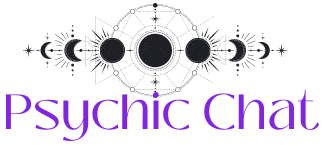The FAE includes a wide range of supernatural beings, from the naughty to the malicious, which are often associated with folklore and mythology. They are often described as forests of forests, rivers, mountains and meadows, which embody the essence of these places. Their appearance can vary greatly, from the essential beauty of nymphs and certain fairies, which can sometimes reflect the serenity of the landscapes that they can protect, to the more peculiar or even disturbing forms of cobbles and trolls that can reflect the wild, unfinished aspects of nature.
The FAE is often attributed with a series of supernatural forces with which they can protect their domains. These include the ability to shape, cast illusions and natural forces.
Imps and fairies are only two of the many entities that are considered part of the Fae Rijk. The full list can vary, depending on the culture and tradition, but some of the most common include pixies, gnomes, elves, gnomes, sprites, brownies and nymphs. Each of these beings has its own unique tradition, characteristics and ways to interact with the human world.
The concept of the FAE as we know it today is based on a mix of traditions and folklore from all over the world. In Europe, the fae is deeply rooted in Celtic and Norwegian mythology, where every culture adds its own characters and stories. The Celts, for example, believed in the Tuatha -Déann, a race of supernaturally gifted beings who were later gemythologized as fairies. The Norwegian contributed with beings such as the light elves and dark elves, called Ljósálfar and Dökkálfar respectively.
In the British islands, every region had his own stories about encounters with these beings historically. The Scottish Highlands are, for example, rich in stories about the Aos Sí, supernatural beings who live in the hills and are known for their music and dance. Stories from sprites and pixies were especially common in regions such as Cornwall and Devon in England. And of course gnomes are an important part of the Irish folklore.
In Indian traditions there are stories about small people who deal with the natural world in ways that are reminiscent of European fairies. The Cherokee, for example, speaks of the Yunwi Tsunsdi, small creatures that are guards of the forest and can help or hinder people, depending on how they are treated.
In Africa, the Yoruba people of Nigeria tell about the Iwin, spirits who can bring fortune or accident to people. Asian cultures also have their own versions of fairy -like entities. In Japan, the Yokai includes a wide range of spirits and demons, some of which share with Western fairies. The Kodama, or spirits of the trees, are considered protectors of the forest and are respected because of their connection with nature.
Ghostjagers usually focus on the spirits of the deceased and chases, but the Fae is sometimes also the subject of investigations. In contrast to traditional ghost hunt, which often revolves around locations with a history of death, tragedy or inexplicable phenomena, meetings with the Fae are more closely associated with natural environments and old locations. Forests, meadows, stone circles and old gardens are typical places where the fae is said to live or visit.
Some paranormal researchers think that the FAE can influence, cause or are being mistaken for spooky phenomena, but as a traditional paranormal phenomena and fae phenomena can be so similar, how can a researcher take them apart? Although both FAE and Ghosts are part of the wider paranormal and supernatural landscape, their behavior and interactions with people have different characteristics that can help distinguish experiences with them.
Encounters with spirits are often manifested by auditory, visual or sensory phenomena such as inexplicable sounds, appearances or a sudden decrease in temperature. These manifestations are often bound by their life stories or the circumstances of their death. They can appear in period clothing, deal with repetitive behavior or communicate messages with regard to their lives or unfinished things.
Encounters with FAE, on the other hand, are not bound by human history or personal tragedies, but are considered part of the living carpet of nature. They may seem more erratic or alien, with characteristics that combine human and natural elements such as wings, pointed ears or essential beauty. Encounters with FAE will be less likely to revolve around the communication of specific messages and more about the experience of wonder, enchantment or negotiation of respect and boundaries between people and the Fae -Rijk.
Interactions with FAE can include enchanting or bewildering experiences, such as time disturbances, seeing flickering lights or hearing enchanting music. This can be stunned, charmed or, in some cases, this can be stunned by the deception or requirements of the FAE.
Where things become a bit more complicated, when we consider that the Fae resembles spirits, but also other supernatural entities such as elemental and cryptides.
The fae, with their narrow ties with nature, has a lot in common with elemental people, which are considered entities associated with the four elements of earth, air, fire and water. The difference between the two is that elemental people are more primary and less anthropomorphic than faes.
Cryptides are also comparable to the FAE, with both exploratory creatures that exist on the edge of scientific concept. Cryptides fall into the empire of crypto soleogy, the study of animals that are reported or rumors that exist on the basis of anecdotal evidence, folklore or other non-oriented sources, but that are not recognized by conventional science. This includes cryptides such as Bigfoot, the Loch Ness Monster and the Chupacabra.
The biggest distinction between the FAE and Cryptides is how they are being investigated. The research of crypto soleogists is intended to collect tangible evidence from the existence of these beings, such as physical traces, photographic evidence and eyewitness reports, which often use scientific methods and technologies to document their findings. Research into the Fae, on the other hand, like those in spirits, tend to rely on observations of environmental abnormalities and personal experiences, especially in natural environments.
The FAE is a diverse and complex group of entities that are defined by their connection with the natural world, their unique forces and rich and their nuanced interactions with people. They not only distinguish these characteristics from other supernatural beings, but also emphasize the folklore and mythology that surround these enchanting creatures.






